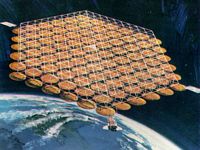 For me, the “killer app” of Space Elevator Development has always been the economically viable deployment of Solar Power Satellites. It promises unlimited, clean energy from the sun, captured by SPS and beamed to earth-based rectennas and from there, channeled into the earth’s power grids. The problem has always been, as I understood it, getting these SPS into orbit cheaply enough so they could be economically viable, and this is still true.
For me, the “killer app” of Space Elevator Development has always been the economically viable deployment of Solar Power Satellites. It promises unlimited, clean energy from the sun, captured by SPS and beamed to earth-based rectennas and from there, channeled into the earth’s power grids. The problem has always been, as I understood it, getting these SPS into orbit cheaply enough so they could be economically viable, and this is still true.
But there’s a BIG difference between making SPS a commercially viable enterprise and making SPS able to generate the lion’s share of earth’s energy usage. In my naiveté, I had hoped they would be one in the same, that we could replace most or all of our polluting energy sources with SPS. Sadly, unless my calculations are way wrong, this turns out to be not the case.
Here’s the basic numbers (I’ll explain where I got them later on in the posting):
- The performance numbers of SPS are projected to be on the order of 2kg/kW (Henson / URSI / Wikipedia)
- A 200T ribbon (140T payload) can handle 125 trips per year (Edwards-Westling)
- This equals a lift capacity of 17,500T per year, per ribbon
- This equals ~8.75 GW per year, per ribbon
- Planet-wide energy usage is project to increase ~.5TW per year (EIA)
- This means it will take ~60 of these ribbons to handle just the INCREASE in planet-wide energy usage, not making a dent at all in currently generated power
I hope my numbers are wrong because they mean that, unless SPS efficiency can be increased by at least an order of magnitude (or two), a SE-SPS solution may be commercially viable, but will not seriously decrease the release of CO2 and other pollutants into our atmosphere.
Another interesting number I came up with is that a space-based solar power array sufficient to power the planet in the year 2030 would be approximately equal in area to the country of India and the rectennas would need to be approximately equal in area to the country of Italy. Well, I thought it was interesting…
I invite everyone to try and prove my numbers wrong – I’ll be very happy if you can show that I’ve overstated the problem somewhere…
Where did I get my numbers?
 I got the SPS performance number from a presentation by Keith Henson. This presentation (PowerPoint format here, pdf format here) is quite interesting. He presents the 2kg/kW number as an aside; his proposal is for a “direct drive” Space Elevator (as opposed to the Edwards-Westling “laser-drive” version). I went to a couple of other sources to try and verify his number. Wikipedia gives a range of .5kg – 10kg per kW. A White paper by the International Union of Radio Science (URSI) gives a number of 1kg/kW for their proposal. So 2kg/kW seemed reasonable to me. Incidentally, I had blogged about his “direct-drive” proposal earlier, here.
I got the SPS performance number from a presentation by Keith Henson. This presentation (PowerPoint format here, pdf format here) is quite interesting. He presents the 2kg/kW number as an aside; his proposal is for a “direct drive” Space Elevator (as opposed to the Edwards-Westling “laser-drive” version). I went to a couple of other sources to try and verify his number. Wikipedia gives a range of .5kg – 10kg per kW. A White paper by the International Union of Radio Science (URSI) gives a number of 1kg/kW for their proposal. So 2kg/kW seemed reasonable to me. Incidentally, I had blogged about his “direct-drive” proposal earlier, here.
The 140T / 125 trips per year number comes directly from the Edwards-Westling book, The Space Elevator.
The projected, yearly, planet-wide energy increase comes from the US Governments Energy Information Administration website. This website contains all sort of fascinating information and I had a lot of fun poking around in it.
This information, in part, led me to the conclusion that only the profit-motive is strong enough to drive the development of the Space Elevator, not the ability to solve our global energy and/or pollution problems. I presented this at the recently completed SESI conference and blogged about it here.
One final note; Keith Henson was recently interviewed by RUSirius. You can find the podcast here. It’s a long podcast; they actually begin talking about at 10:03 into it. I strongly recommend you review Keith’s proposal before you listen to this rather rambling podcast – otherwise it may not make much sense to you.
(The picture is from www.abo.fi – click on it for a larger version)
 As reported today on SpaceRef.com, NIAC, The NASA Institute for Advanced Concepts, will be closing its doors on August 31st of this year. Many people, including yours truly (here and here), had reported that NIAC was intending to close, but a last ditch effort was mounted to save it. Sadly, this effort has failed.
As reported today on SpaceRef.com, NIAC, The NASA Institute for Advanced Concepts, will be closing its doors on August 31st of this year. Many people, including yours truly (here and here), had reported that NIAC was intending to close, but a last ditch effort was mounted to save it. Sadly, this effort has failed.



 Joe Julian writes on the
Joe Julian writes on the 

 This quote is taken from Dr. Brad Edward’s PowerPoint presentation posted on the
This quote is taken from Dr. Brad Edward’s PowerPoint presentation posted on the  I subscribe to Marc Boucher’s daily emails from his
I subscribe to Marc Boucher’s daily emails from his 
 From Brian Turner, fearless leader of the KC Space Pirates;
From Brian Turner, fearless leader of the KC Space Pirates; No, not really, but I liked the
No, not really, but I liked the 
 What they need to do is to focus this beam onto a lake or pond and have a model sailboat travel through the focal point. Or, to update it to more modern times, get a model airplane and fly it through the focal point. Seeing either do so and then spontaneously burst into flames would generate some great footage!
What they need to do is to focus this beam onto a lake or pond and have a model sailboat travel through the focal point. Or, to update it to more modern times, get a model airplane and fly it through the focal point. Seeing either do so and then spontaneously burst into flames would generate some great footage!
 At the Space Elevator Reference, Dr. Brad Edwards announces;
At the Space Elevator Reference, Dr. Brad Edwards announces; One note on this Entreprenuer.com article; she writes that this year’s Space Elevator Games will be held in October. Others have written the same thing. Some have written it would be in conjunction with the Space Elevator Games and still others have written that it would be held in Las Vegas.
One note on this Entreprenuer.com article; she writes that this year’s Space Elevator Games will be held in October. Others have written the same thing. Some have written it would be in conjunction with the Space Elevator Games and still others have written that it would be held in Las Vegas.
 I’d love to go to this symposium, but don’t think I can. From the symposium program, it appears that Dr. Edwards is scheduled to speak from 8:30-9:15am on Thursday, June 7th. Let’s hope Dr. Edwards will make the details of this proposal available soon to all of us. This is the kind of project which the entire space community can and should get behind. Not only would it be beneficial for Lunar colonization, but for Martian colonization as well. And once a Space Elevator (or two) is in place, it changes the entire ballgame regarding space exploration.
I’d love to go to this symposium, but don’t think I can. From the symposium program, it appears that Dr. Edwards is scheduled to speak from 8:30-9:15am on Thursday, June 7th. Let’s hope Dr. Edwards will make the details of this proposal available soon to all of us. This is the kind of project which the entire space community can and should get behind. Not only would it be beneficial for Lunar colonization, but for Martian colonization as well. And once a Space Elevator (or two) is in place, it changes the entire ballgame regarding space exploration. In the same posting, the Space Elevator Reference also discusses the upcoming German Space Elevator Games, also to be held in 2008. It’s not clear from the posting whether or not they will be held in conjunction with the Conference, but looking at the logo, I would guess “yes”. Thanks to a tip from Team Zero G’s Arthur Shay, I reported in early March about these same Games. You can read that post
In the same posting, the Space Elevator Reference also discusses the upcoming German Space Elevator Games, also to be held in 2008. It’s not clear from the posting whether or not they will be held in conjunction with the Conference, but looking at the logo, I would guess “yes”. Thanks to a tip from Team Zero G’s Arthur Shay, I reported in early March about these same Games. You can read that post  During the recent SESI 2007 Conference, Brad Edwards announced that a new European organization,
During the recent SESI 2007 Conference, Brad Edwards announced that a new European organization, 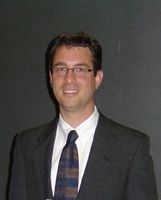 On
On 
 I got the SPS performance number from a presentation by
I got the SPS performance number from a presentation by  As those of you who got up early to try and watch the CBS Sunday Morning Space Elevator segment I
As those of you who got up early to try and watch the CBS Sunday Morning Space Elevator segment I 
 I received this from Andy Price. That Newton guy was one smart fellow…
I received this from Andy Price. That Newton guy was one smart fellow… From the May, 2007 Newsletter;
From the May, 2007 Newsletter;

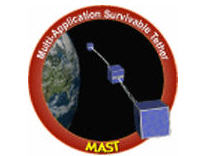 On the MAST blog, they’re reporting that have seen mixed results so far. While they’ve been able to contact “Gadget” and download a lot of data from it, they’ve had only very limited success in actually deploying the tether. From the blog;
On the MAST blog, they’re reporting that have seen mixed results so far. While they’ve been able to contact “Gadget” and download a lot of data from it, they’ve had only very limited success in actually deploying the tether. From the blog;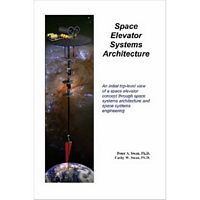
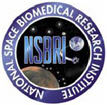 In February, I had
In February, I had 
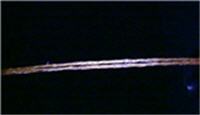 The base picosatellite (“Gadget”) has been successfully contacted via radio. The deployment picosatellite (“Ted” – hey, what a great name! 🙂 ) has, so far, not made successful radio contact with ground control. However, the third picosatellite (“Ralph”), the one which will be traveling along the tether, photographing and monitoring its health, has sent back a preliminary picture of a portion of the tether – prior to deployment.
The base picosatellite (“Gadget”) has been successfully contacted via radio. The deployment picosatellite (“Ted” – hey, what a great name! 🙂 ) has, so far, not made successful radio contact with ground control. However, the third picosatellite (“Ralph”), the one which will be traveling along the tether, photographing and monitoring its health, has sent back a preliminary picture of a portion of the tether – prior to deployment.